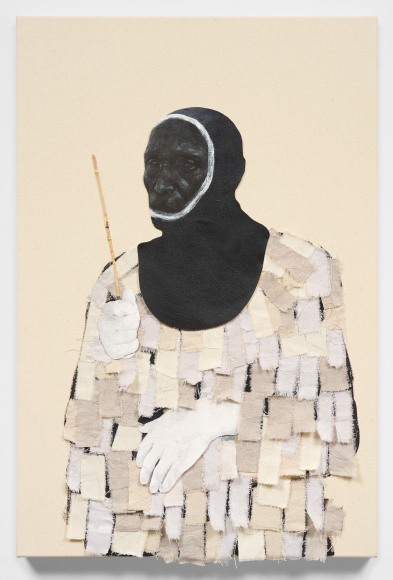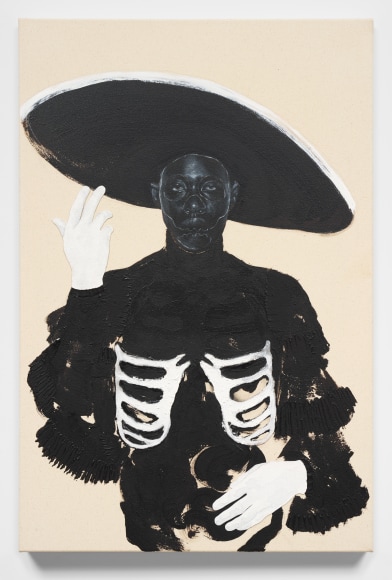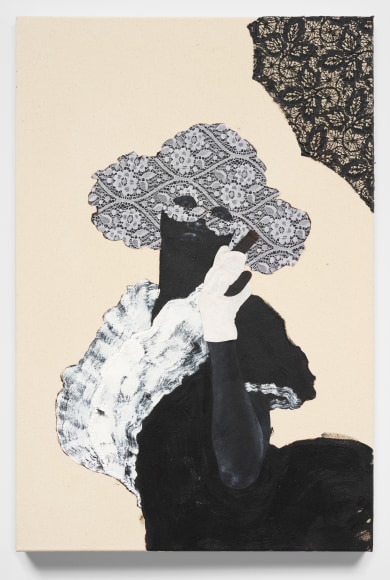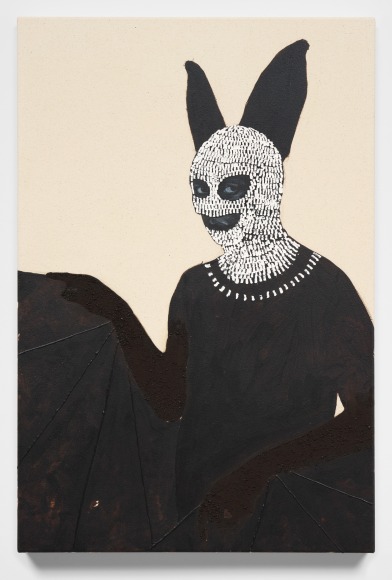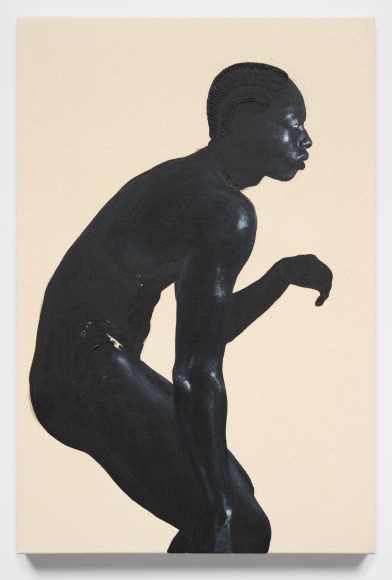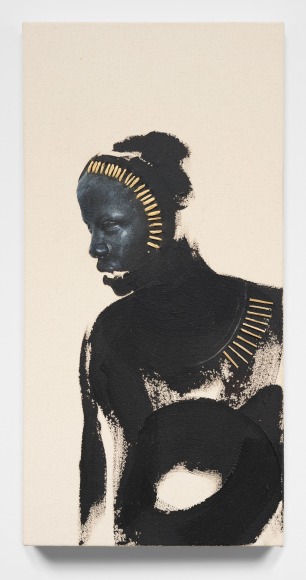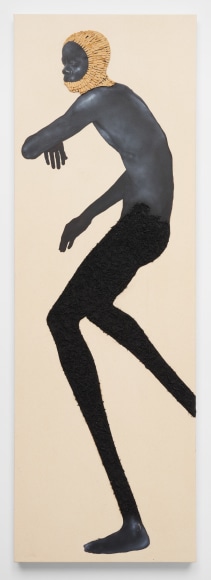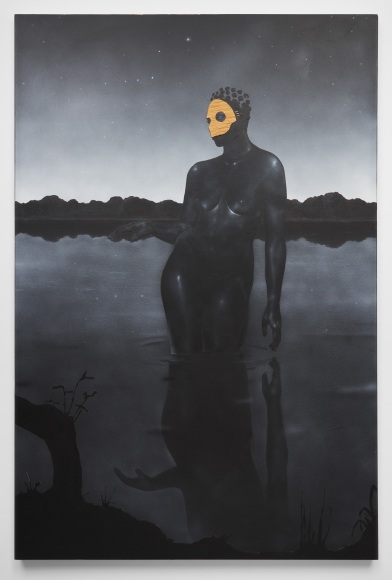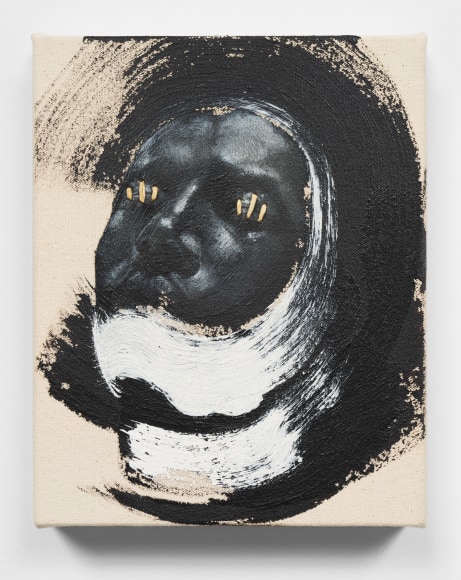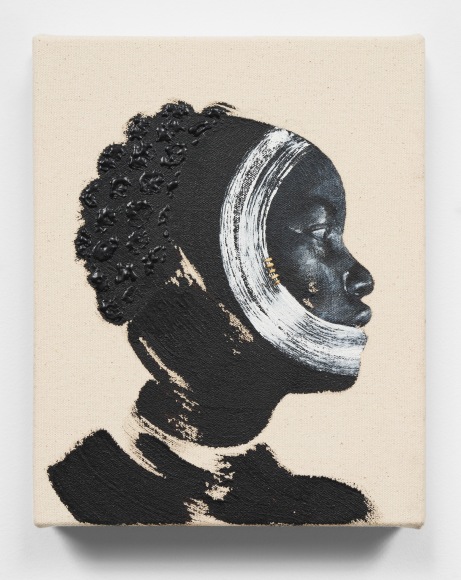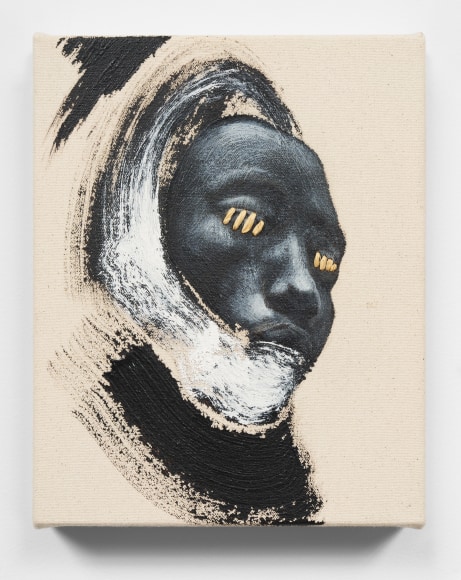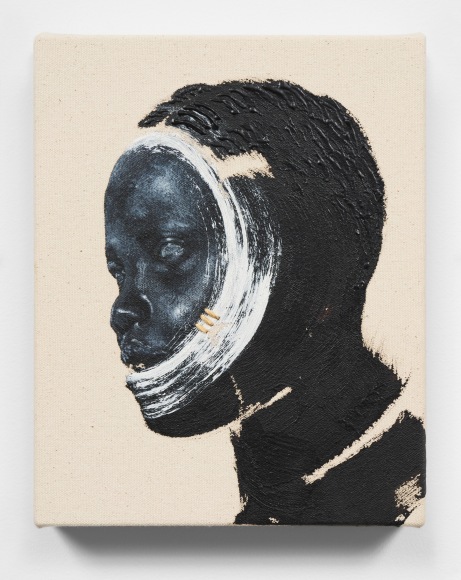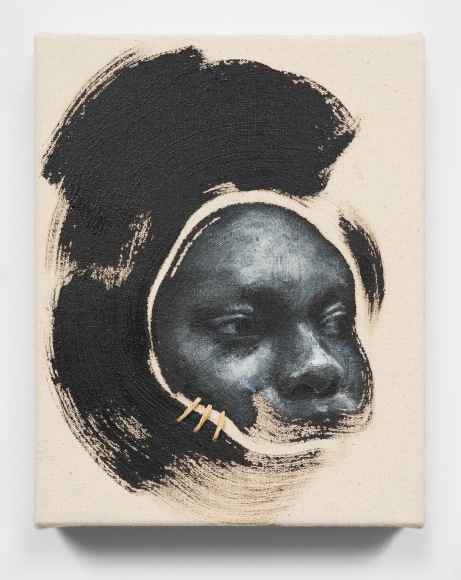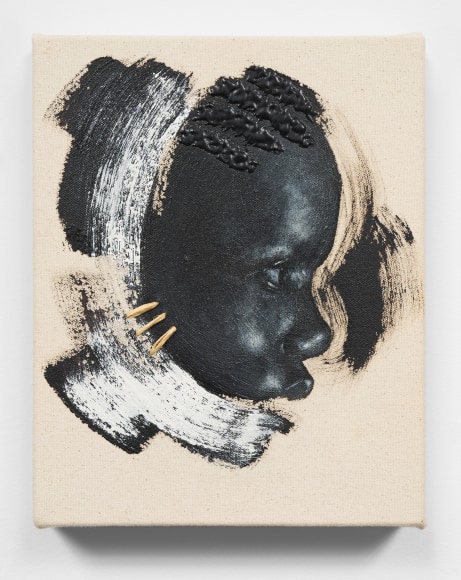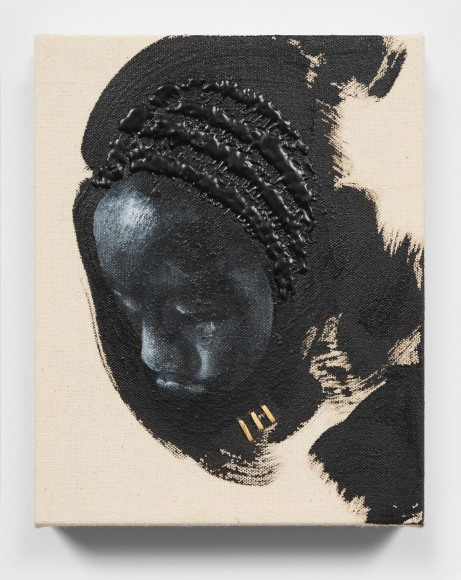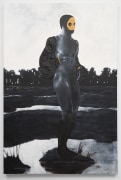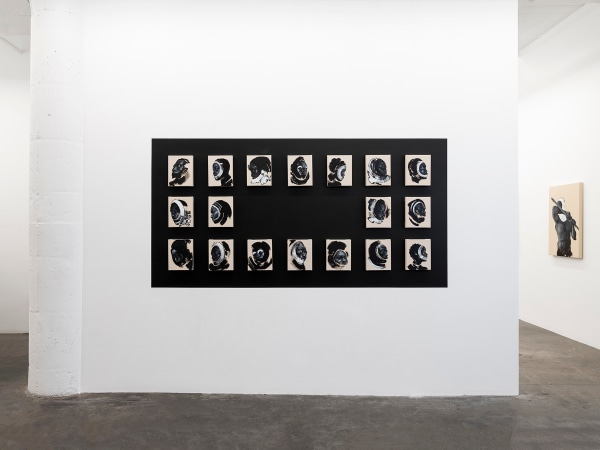GAVLAK Los Angeles is pleased to announce Braxton Garneau’s solo exhibition, Procession. Garneau’s work is based in collecting and researching materials, culture and history. Focusing on harvested and hand-processed materials, he explores the sociocultural history of his Caribbean heritage. In Procession, Garneau will present a new series of works focused on ritual and costuming through the complex history of Canboulay, and the characters of present day Carnival. Procession will be on view at GAVLAK Los Angeles from May 20th through July 1st, 2023. There will be an opening reception on Saturday, May 20th, from 4 - 7 pm.
Materiality is at the forefront of Garneau's work. The natural materials used in his paintings are grounded in the inextricable colonial histories and cultural ties of Caribbeans who’ve spent generations in proximity to them. His portraits are built up using asphalt, a natural emulsion of mineral elements and bitumen, and raffia, a fibre made from palms found in Africa and the Caribbean. Asphalt, in particular, has a personal significance to the artist. The material connects the journey of his grandparents from Trinidad, home the world's largest naturally exposed deposit of asphalt, to the oil sands in Northern Alberta, where his grandfather came to work in the 1960’s.
Contrary to North American ideas of industrial extraction, Pitch Lake in La Brea in southwest Trinidad is generative. Locals consider the lake to be a fountain of life that cures ailments. Pitch Lake sustains flora and fauna including hummingbirds, nymph lilies, and birds of paradise. The use of asphalt to build up the portraits in Procession imbues the work with the energy and life of this natural material. Garneau imagines Pitch Lake as a symbolic melting pot, out of which he pulls the narratives, histories, cultures and characters. The figures in Dusk (La Brea) and Midday (La Brea) emerge from this lake as witnesses to the events and celebrations before them.
Canboulay (from the French “cannes brûlées”, meaning burnt cane) has roots as a harvest festival and celebration in Trinidad in the 18th century, parallel to the extravagant masquerades held by French plantation owners. Through procession, pageantry, satire, music and dance, Canboulay resisted European domination and celebrated African culture. As Canboulay evolved into present day Carnival, it has taken on many different meanings and forms, as complex as its history, but essentially about emancipation and self expression.
Braxton Garneau introduces the exhibition through the structure of the Canboulay mass processional. Through 18 individual portraits of Processioners and the Canboulay King, Canboulay Queen, and Canboulay Prince, Garneau reimagines the 18th century procession where the royalty were flanked by stickmen carrying flambeaux, and followed by women and children with reinforcements of sticks.
Moving into present-day, Garneau draws our attention to archetypal Carnival characters, including Dame Lorraine, Pierrot Grenade, and Midnight Robber. These works showcase the complexities of costuming and layering of cultures that have developed over the decades. These characters combine mask-making and costuming traditions of Africa and Europe to create an amalgamation of cultures, and a symbol of resilience and transformation.
In Procession Garneau draws our attention to the complicated colonial history and deeply embedded cultural roots of Carnival while celebrating the collective resistance and social action achieved through costume, music and dance.

